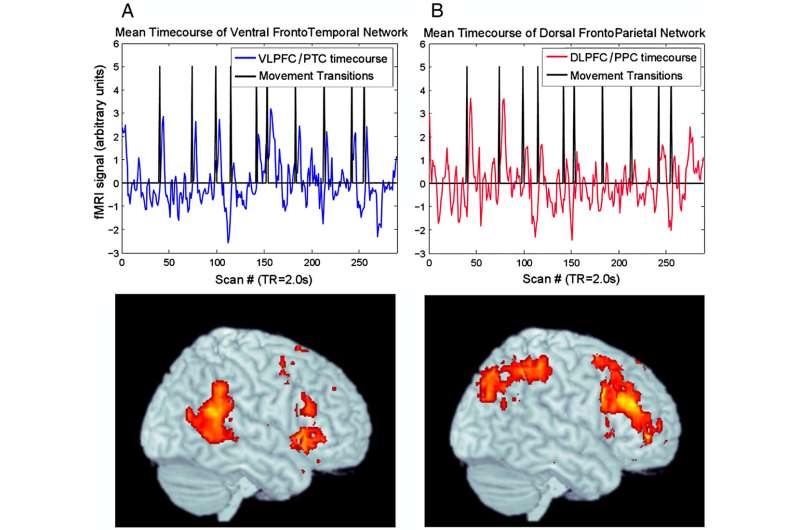This article has been reviewed according to Science X's editorial process and policies. Editors have highlighted the following attributes while ensuring the content's credibility:
fact-checked
peer-reviewed publication
trusted source
proofread
Tuning into transitions: How our brains cross musical boundaries

What happens in the brain when one musical phrase ends and another begins? The answer lies in musical boundaries—the invisible lines shaping our listening experience.
Researchers at the University of Jyväskylä (Finland) have uncovered new insights into how the brain processes musical boundaries—the points in music where one phrase ends, and a new one begins—while exploring whether being a musician makes a difference.
The study, led by postdoctoral researcher Iballa Burunat together with professors Daniel Levitin and Petri Toiviainen (all of whom are coincidentally both neuroscientists and musicians) has been published in Proceedings of the National Academy of Sciences. By analyzing fMRI responses of musicians and nonmusicians listening to music, they found significant differences in brain activity at musical boundaries.
Much like how we naturally break spoken language into sentences to derive meaning, humans also identify and process musical boundaries to make sense of musical compositions. The ability to detect and process these boundaries is crucial for forming a coherent understanding of and deriving pleasure from music, while also enhancing our capacity to remember it.
"Without discernible segments, music would lack a sense of form, it would feel like an endless, chaotic stream of sounds, akin to reading a text with no punctuation or breaks between sentences, making it difficult to follow the narrative," explains Dr. Burunat.
Boundary perception is in fact a skill that extends beyond music: it affects how we perceive and interpret various aspects of our daily life, such as understanding speech, navigating social interactions, and following complex instructions—all tasks that involve breaking down information into smaller chunks to understand it. Music is no different.
"When we listen to music, our brains are constantly identifying patterns and anticipating what comes next, so being able to process musical boundaries helps us comprehend musical structure and meaning," clarifies Burunat.
The study is also significant in its approach to studying these phrasal transitions: by using a real-life approach, attempting to simulate real-world conditions as closely as possible, while having participants listen to real-life music of different genres, and not having to self-report during the listening experiment.
"Our study identified distinct brain activity patterns around musical boundaries. As we approach a transition, posterior auditory areas prepare for the change. During and after, brain activity shifts to middle and anterior auditory regions to process new information, with notable deactivation of frontal regions," explains Burunat.
"This dynamic processing is akin to how we parse sentences in language; much like language processing, musical phrases activate common neural substrates involved in syntactic processing and rule detection
"We also observed that musicians and nonmusicians engage these two networks in subtly different ways. Musicians primarily rely on specialized circuitry for auditory processing, while nonmusicians engage in a broader, more general network to navigate musical boundaries. This showcases the remarkable adaptability of the human brain in how expertise can shape and refine the way we process sounds."
This research advances our understanding of how the brain makes sense of music, emphasizing the role of expertise in refining neural processing, while opening avenues for exploring potential music-based therapies for language comprehension.
More information: Iballa Burunat et al, Breaking (musical) boundaries by investigating brain dynamics of event segmentation during real-life music-listening, Proceedings of the National Academy of Sciences (2024). DOI: 10.1073/pnas.2319459121


















